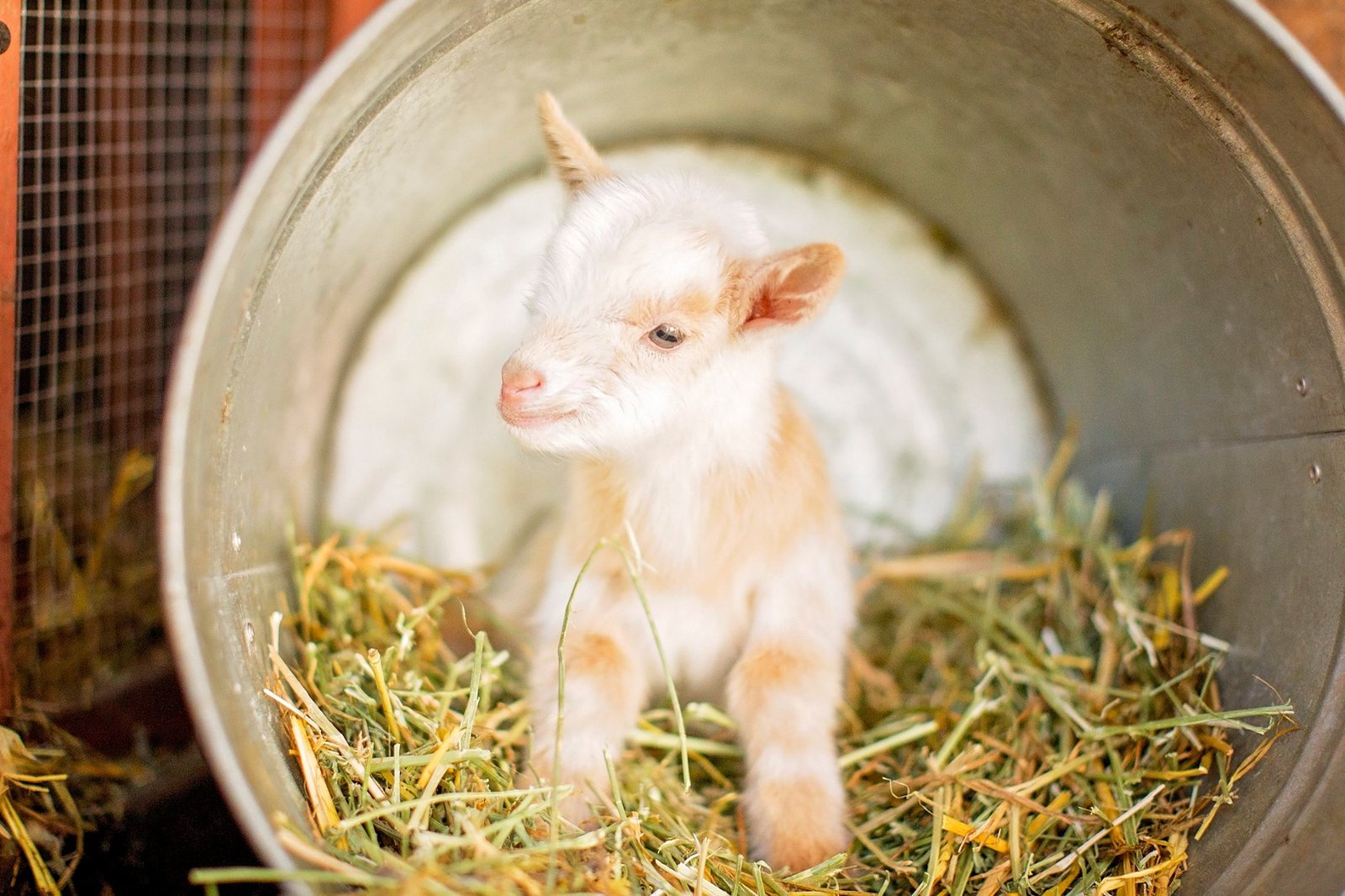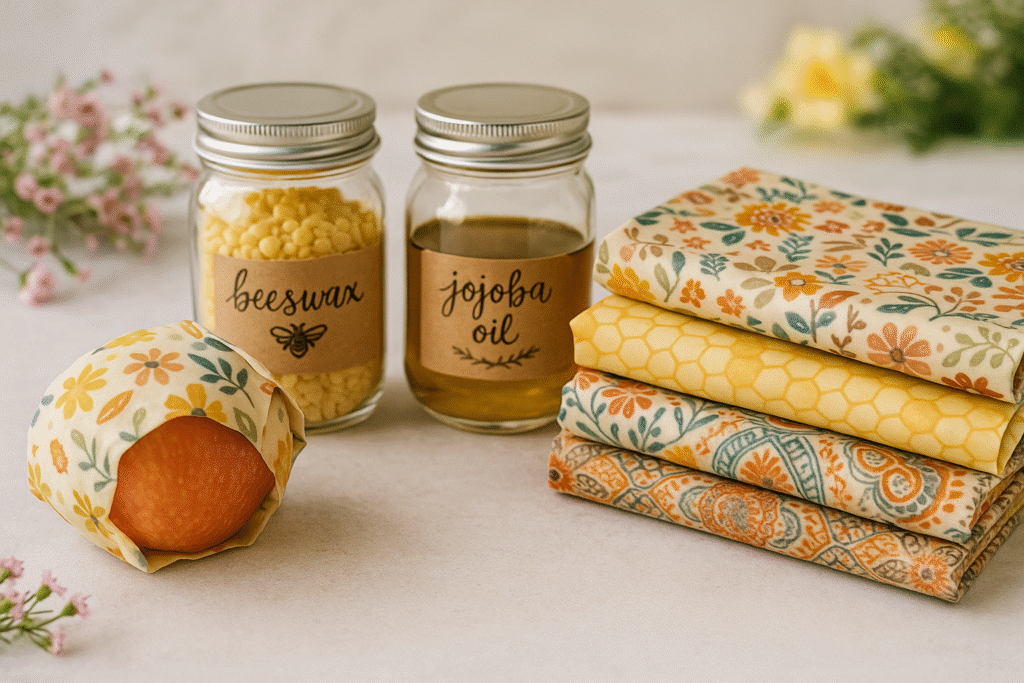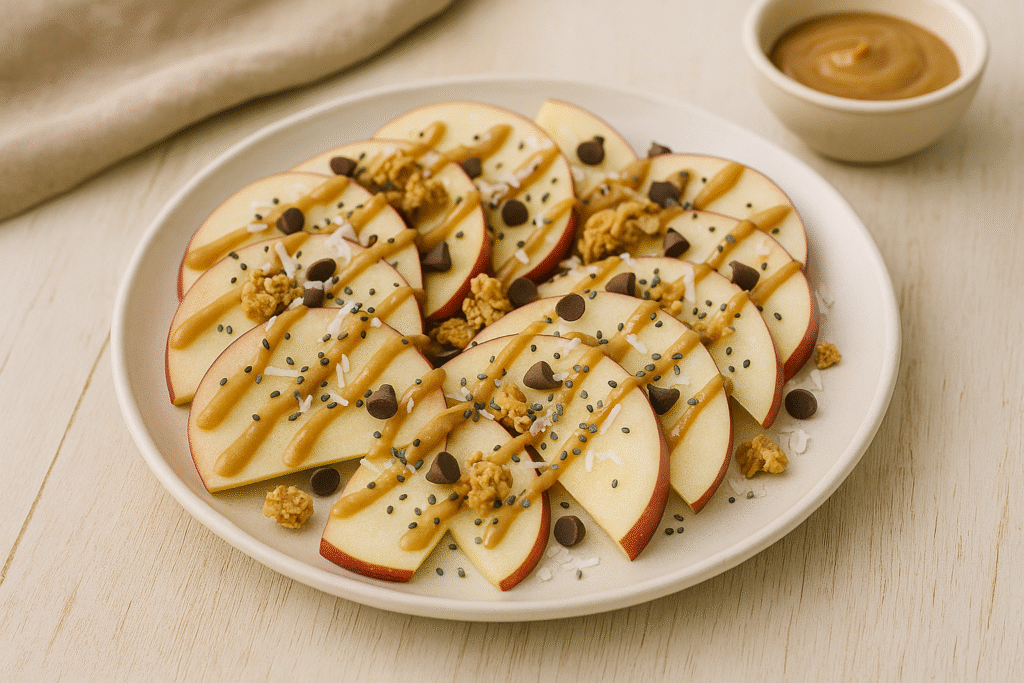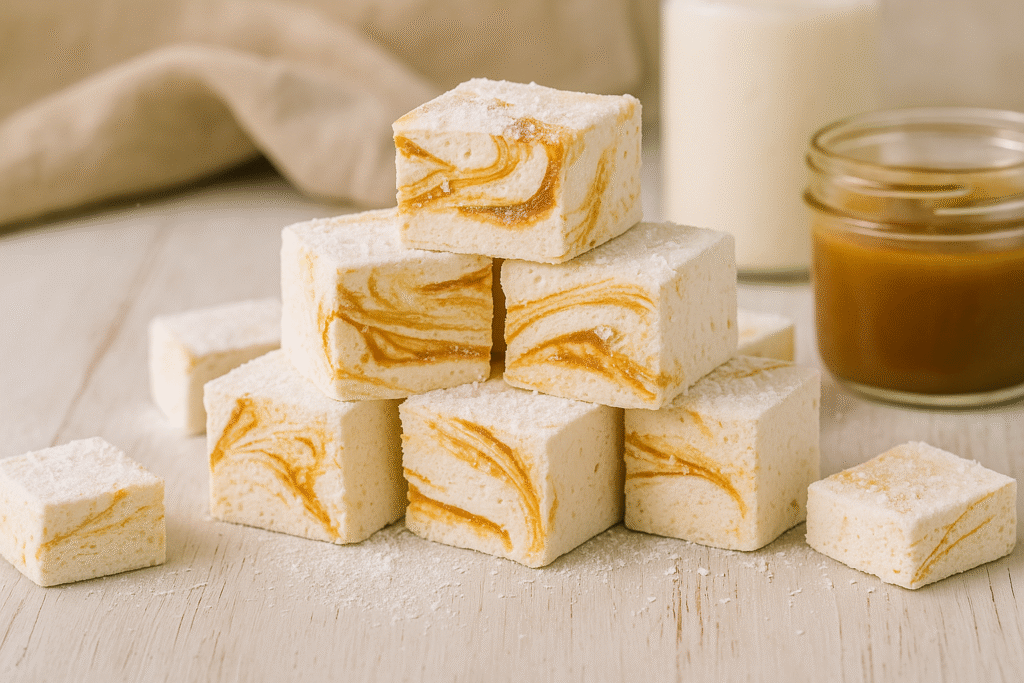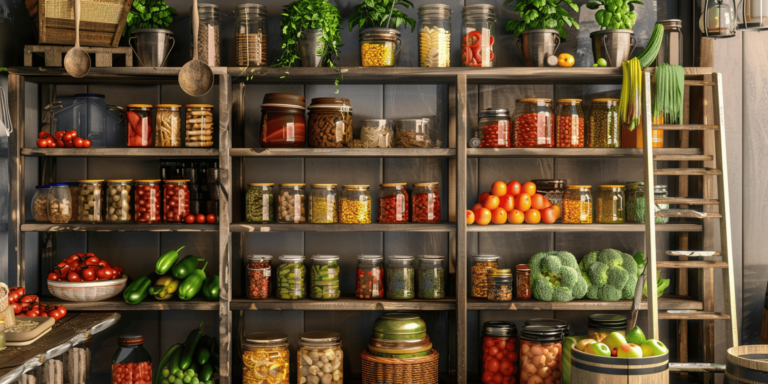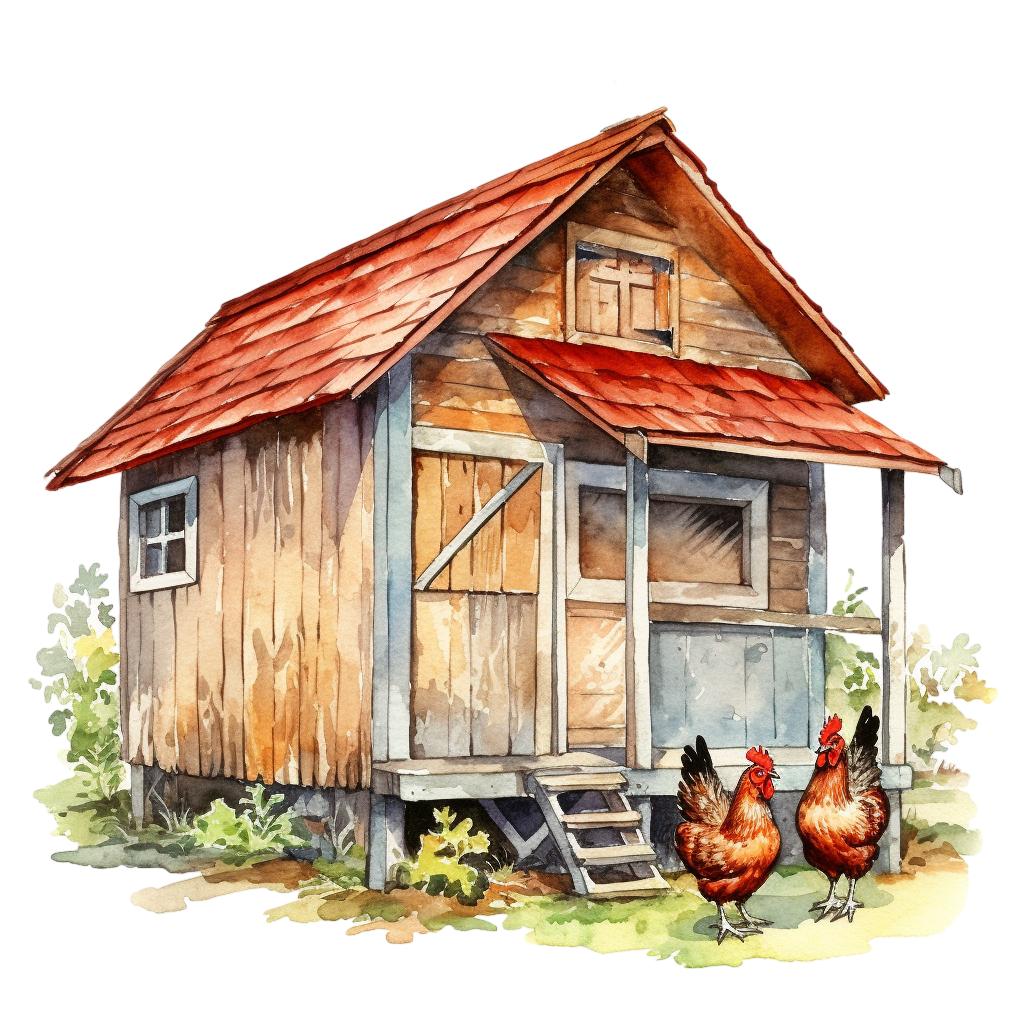Livestock
If you have a little land, you might want to consider adding small livestock to your homestead. Not only are they adorable, but goats and sheep are incredibly useful on any property. Not only will they keep you entertained for hours with their silly antics, but they can provide you with milk, wool and even steady income. Let’s look at the ways goats and sheep can help your homestead and what you need to get started.
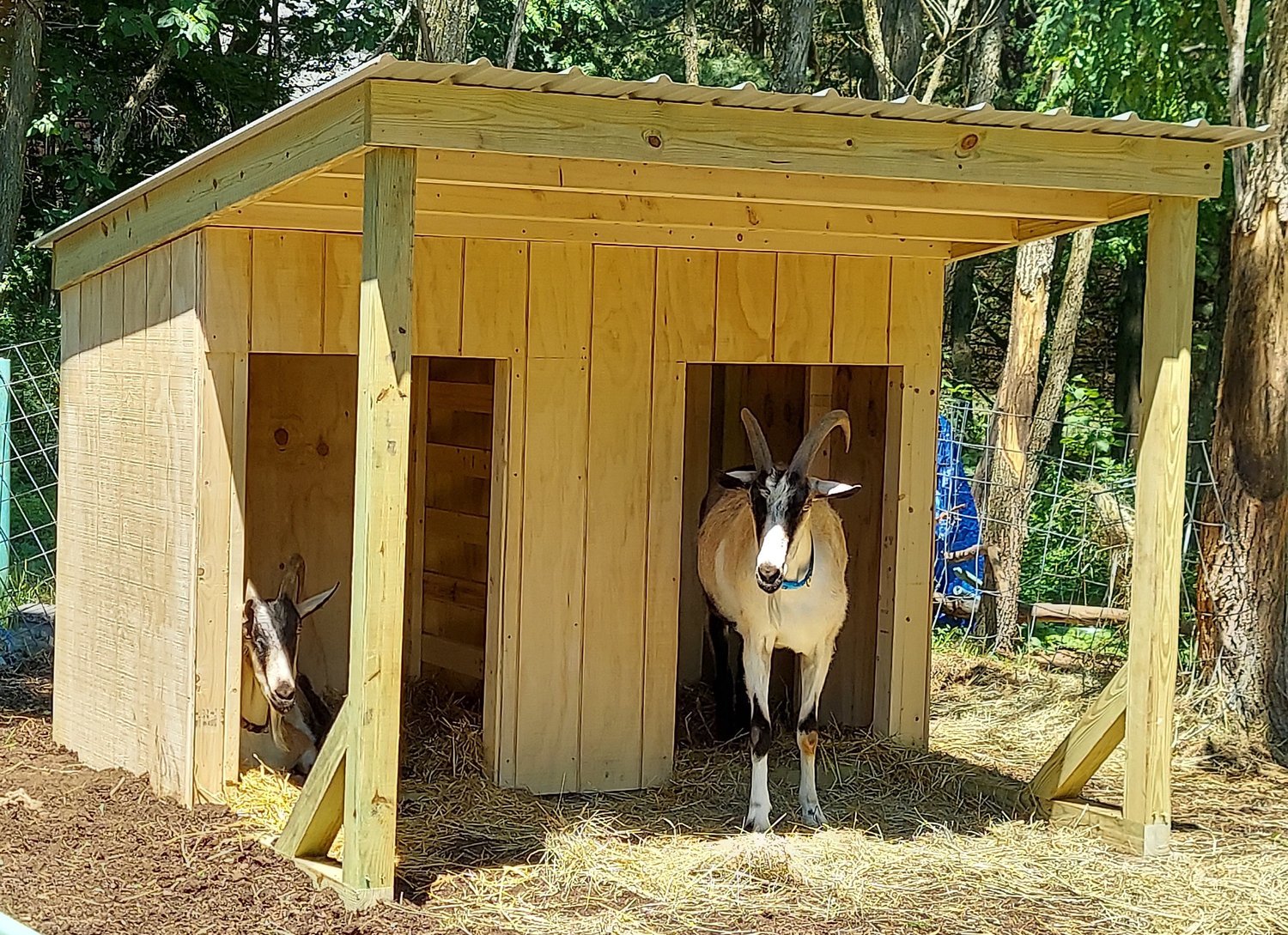
This is an example of a goat shed by Glenn’s Sheds.
Shelter
The first thing you need for goats or sheep is shelter. Goats and sheep don’t like to get wet and they don’t tolerate it well. Wet and soggy conditions will lead to problems with their feet and wool, so you need to provide a clean, dry area for them to go at all times.
Goats are notorious for getting into places they shouldn’t be. They are escape artists and if they see greener grass on the other side of the fence, they’ll do everything they can to get to it. So sturdy fencing is a must for goats. Sheep are less likely to try to escape and are a little more content to be in their designated areas.
My goat pen was constructed of chain link fencing and a livestock gate. I never had any problems with escaping goats. If you plan to have both male and female goats or sheep, you need to have separate areas for each. Make sure these areas are secure or you’ll quickly end up with more animals than you had intended. I learned this the hard way and ended up with 11 goats! My buck escaped his pen to be with the girls and before I knew it, all three does were pregnant. Trust me, you don’t want that on a small homestead.
Caring for Small Livestock
Your goats and sheep will need regular care. When first considering adding livestock to your homestead, the list of care can seem overwhelming, but don’t let it scare you. Most things are quick and only need to be done every once in a while. Other things will need to be done more frequently, but they aren’t difficult tasks.
Once you get used to the care of the animals, it doesn’t seem like much at all. Just like everything else, there is a learning curve and once you get the hang of it, raising small animals is really quite enjoyable and fun.
Hoof Trimming
Goats and sheep will need their hooves trimmed periodically. There are people who can come to you to do this task, or you can learn it yourself. I never found it difficult to trim my goat’s hooves and there are plenty of how-to videos on YouTube to help you get started. If you aren’t comfortable with this task, ask your local Facebook community for assistance. There’s bound to be someone who will show you how or even do it for you.
Sheering
If you have sheep, you will need to sheer them once a year, usually in the spring. You don’t need any special equipment for sheering sheep and if needed, you can use a pair of scissors.
Large sheep-sheering operations have tons of specialized tools to do the job quickly, but for a small operation like your homestead, you can use what you have and take your time.
Sell or use the wool on your homestead. If you don’t want to use it, wool is completely compostable, so you can just add it to your compost pile.
Weathering
Weathering the males is the practice of castrating them at a young age. If you don’t plan to use the males to breed, you might want to consider weathering them.
Weathered males can live with the females, whereas intact males are usually kept separate.
Weathered males are usually kept as pets or raised for meat. A weathered male is preferred when raised for meat as the castration improves the taste and quality of the meat.
Registering
To protect the purity of the breed, many sheep and goat owners will choose to register their animals. This can only be done if the parents are both registered.
A registered goat or sheep is simply one that has proof that it comes from a pure line of the breed. Cross-breeding can happen and many people want to make sure their animals are a certain breed.
The goats I had were Nigerian Dwarf and I needed that breed because of the taste of the milk. For that reason, I looked for registered goats to ensure the purity of the breed and to get the milk I really wanted.
Babies
Letting your sheep or goats breed is a great way to bring in some revenue and even gain a source of milk on your homestead. The best part is that the kids or lambs are just about the most adorable things on the planet.
Does need a rest period between pregnancies, so I like to have only one birth per year. The number of kids or lambs born each pregnancy will vary depending on the breed, but you can usually expect 1-3 babies each time.
Disbudding
This is a difficult issue for me. Some experts will tell you that it’s necessary to disbud goats and sheep to prevent injury and even death in your herd. However, I have found this to not be true.
The first time my doe had kids, I had the kids disbudded. I cried. I decided right then that any future kids my goats had would be able to keep their horns and I would deal with the consequences. The method of disbudding the baby goats seems extremely inhumane and I will never have it done again.
Milking Goats and Sheep
One of the great things about letting your goats or sheep have babies is that you get to have some of the milk! Not everyone likes the taste of goat milk and I totally get that. I can’t stand the taste! If you like it, then you’re all set and you should have no problems with the milk. If you’re like me, there’s some good news.
The reason my homestead had Nigerian Dwarf goats is because their milk tastes just like cow milk. My daughter had trouble digesting cow milk, but goat milk was just fine for her. So after a lot of research, I decided to give Nigerian Dwarf goats a try. It was one of the best things I ever did! The goats were easy to milk, friendly and cute as can be.
Sheep milk tastes similar to cow milk as well, but has a creamier texture. Sheep milk makes fantastic ice cream. It has more fat than cow or goat milk, making it ideal for butter, yogurt or cheese.
Equipment
To milk a goat or sheep, you really only need your hands and a clean container (like a stainless steel bowl). But a milking stand will make the job a whole lot easier. A Butterfly House has printable plans for building your own stand or you can buy one on Amazon. I highly recommend using one that includes a feeder. This will make it so your goat or sheep can snack on some tasty treats while you milk them, creating a positive experience all around.
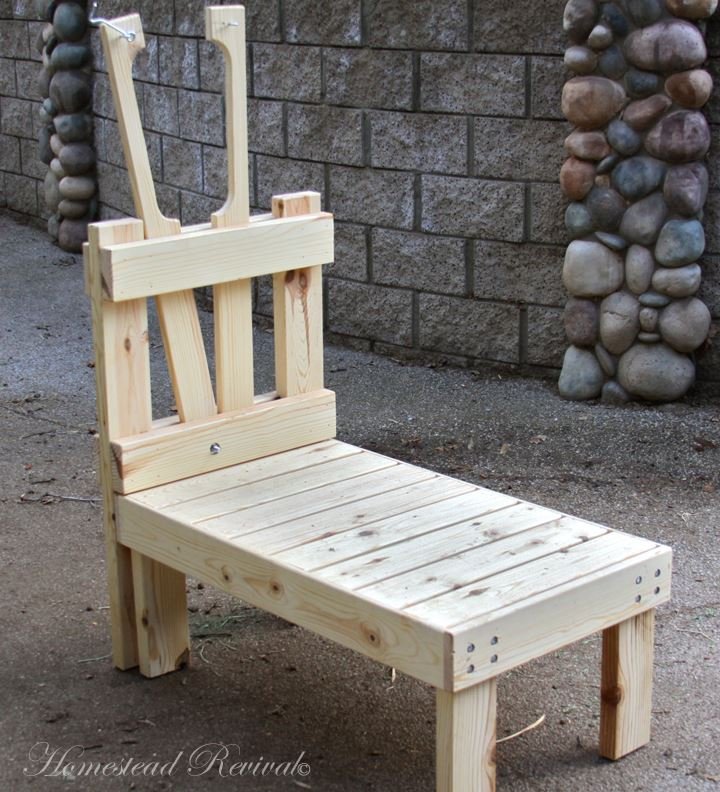
Challenges With Milking
Most of the time, milking goats and sheep is fun and enjoyable. Every once in a while, you might get an animal that’s just not cooperating. If you raise the sheep or goat yourself, you can easily get them used to having people milk them by making it normal for you to feel their udders. It may sound strange to feel their udders when you’re not yet milking them, but getting them used to the feeling will make it easier to milk them in the future.
I’ve had a goat or two that simply did not like being milked. They would kick at me or stomp their foot in the bowl of fresh milk I was working on, ruining the entire batch of milk. Sometimes she’ll kick the milk bucket over and spill all your hard work. With patience and sometimes some restraints, the two of you will learn to work together. If it’s just not working out with that particular animal, I have found it’s best to just move on and milk a different one. Not every relationship is destined for success.
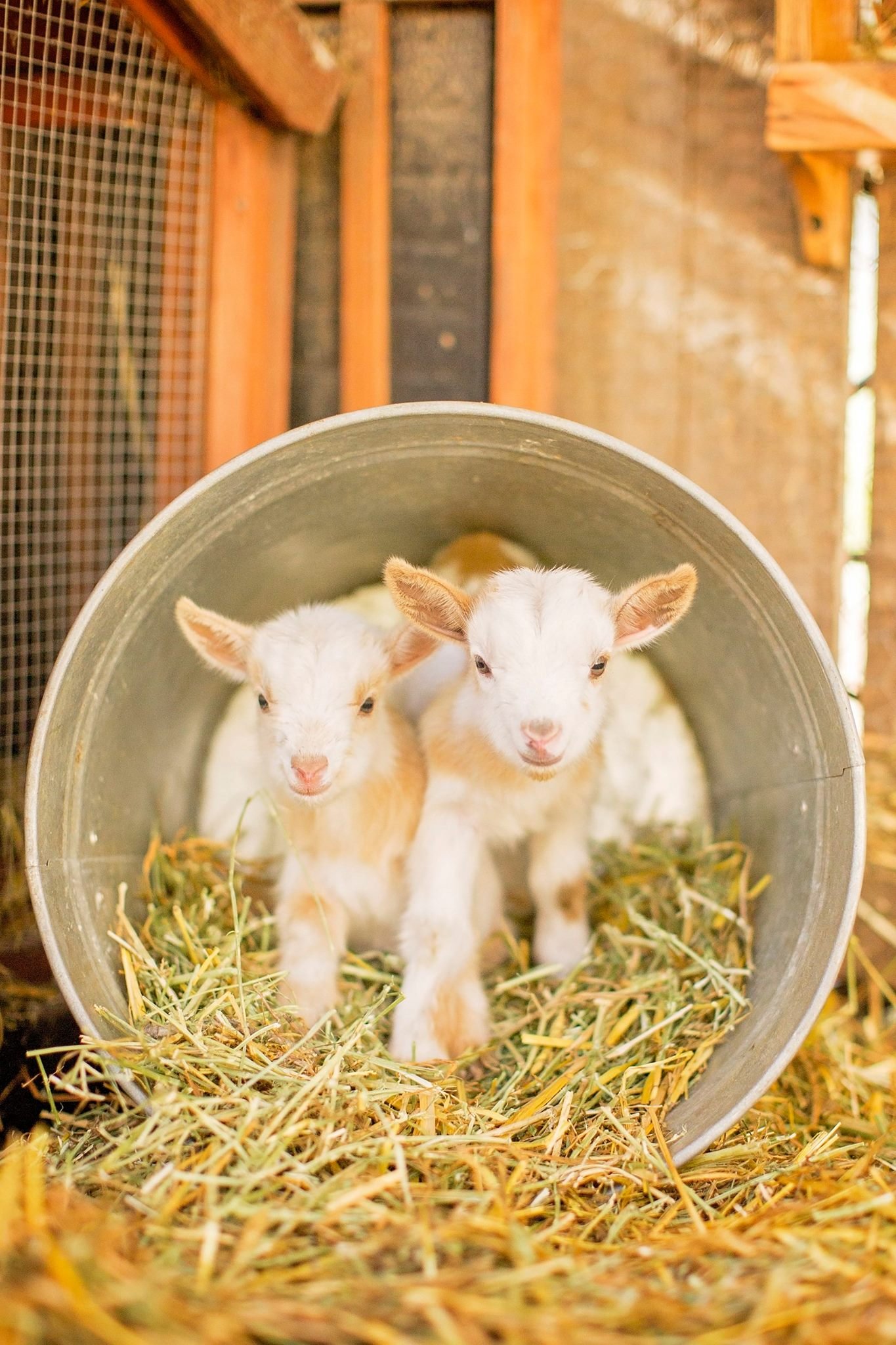
Feeding your Livestock
Goats and sheep will both graze when they can. Sheep like to graze on grass, clover and other things you might find in a pasture. Goats like to eat small branches, leaves and flowers.
Unless you have ample pasture, you’ll need to provide hay for your goats or sheep. Female goats and sheep can have some alfalfa, but it can cause some problems if they have too much. Male goats and sheep should not be fed alfalfa. It can cause urinary tract issues as well as digestive issues, especially in males.
Orchard grass or hay is a good hay to get for your sheep or goats. Alfalfa pellets are a tasty treat for the girls, but provide them in moderation. Oats are also a nice treat to give them when milking.
Fruit and vegetable scraps are great for these animals and they love it! The saying that goats will eat anything is only partially true. There’s a lot they don’t like and won’t eat. They’ll also try to nibble your clothes, so go figure!
Storing Food
Once you have those bags of grain and bales of hay, you need somewhere to store them. Metal trash cans with locking lids are great for grain storage. They will not only keep critters out of the tasty grain, but they keep it all dry as well. I have had to add a dab of silicone to the connection points for the handles to keep water out, but other than that, the lids are perfectly fine for keeping out the rain.
Hay should be stored in a dry place. It can and will mold very easily if it gets wet. If you don’t have a concrete pad to store your hay on, grab a pallet or some pieced of wood to keep under the hay so it’s not sitting on the dirt. Rodents will love the warmth it provides and will burrow under the hay if it’s on the dirt. The hay will also absorb a lot of moisture from the ground, so be sure to keep it off the ground whenever possible.
Keep the food away from the goats and sheep. They will eat far too much when left on their own and this can cause serious digestive issues for the animals.
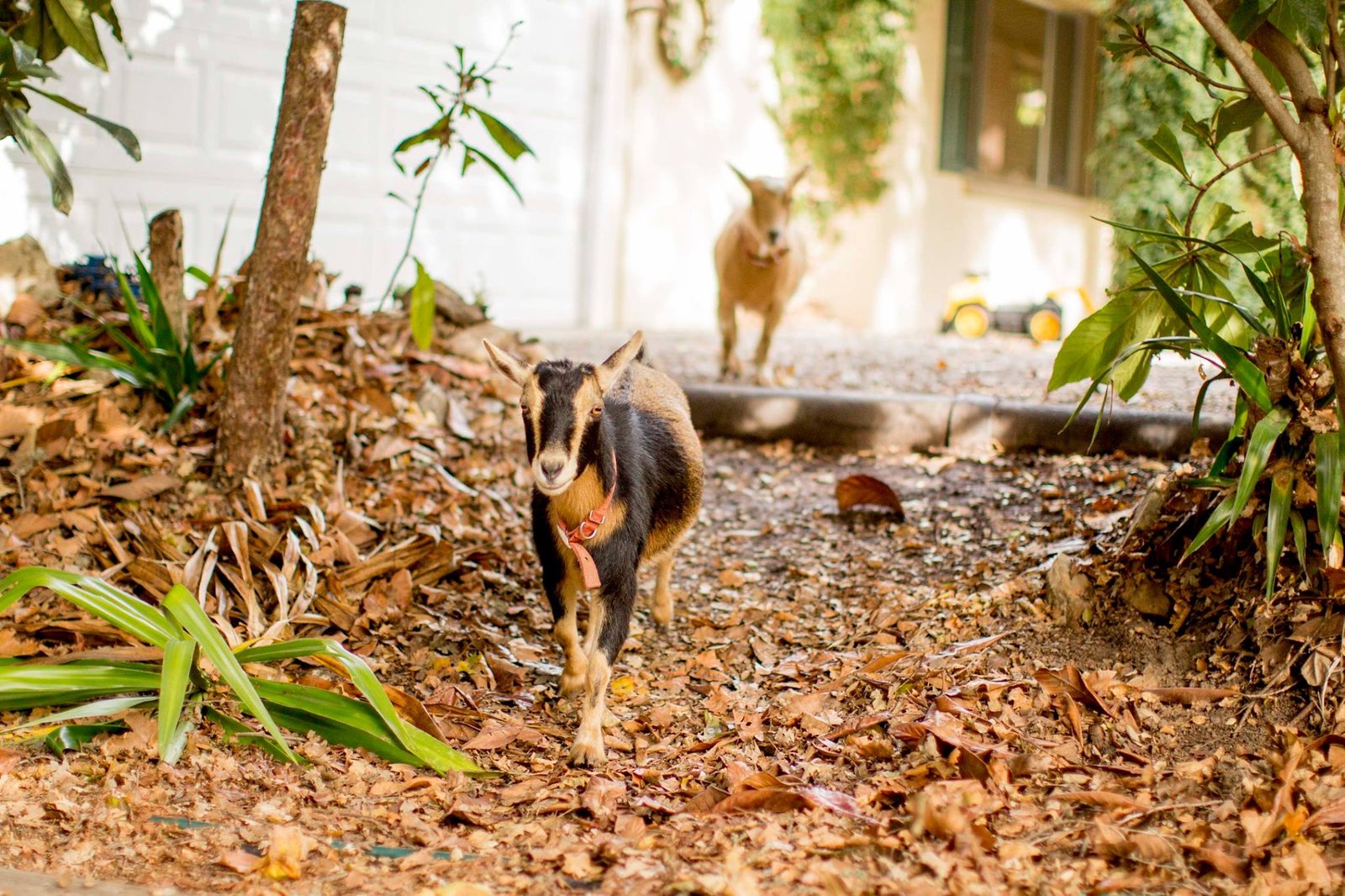
Selling your Livestock
Selling your goats and sheep is a great way to have some income on your homestead. If you plan to breed your animals to have milk, you need to have a plan for what to do with all the animals you will inevitably end up with.
Nigerian Dwarf goats are known to have four or more kids at a time. When your herd goes from two goats to six or more overnight, you’ll need to decide what to do with all those animals.
Selling the older members of your herd can help keep numbers down and help pay for the food of the newer members. Registered animals will sell for a bit more than unregistered animals, but both will sell.
Look for Facebook groups in your area that focus on homesteading. These groups are a great place to list your animals for sale.
Processing Animals For Meat
If you want to use your sheep and goats as a source of meat, there are a few options. Many areas will have a local slaughterhouse where you can pay them to slaughter and process your animal for you. You simply deliver your goat or sheep and they provide you with all the cuts of meat from that animal. I have found that this is not cost effective for my family. The price of the processing was just far to high to make it worth giving up a member of my herd.
Another option is to process the animal yourself. I’ve never processed a large animal before (only chickens), but when I had goats, this was a goal of mine. I really wanted to have a fully self-sufficient homestead that could provide meat, dairy and everything else my family and I could possibly need. The only problem is that I can’t do something that I know is going to hurt another living thing. I can’t give shots, I can’t stitch wounds and I certainly can’t deal a death blow. I don’t know why…I just can’t do it. So my goats never became dinner.
I tried to find a local hunter that perhaps went deer hunting and knew how to field dress a deer. I thought they would be a great resource to help me learn the methods of processing a larger animal. With an animal as large as a goat, I knew there would be more to it than there is with a chicken and I was eager to learn. Dressing the animal is not a problem for me. Only killing it is a problem. But, I wasn’t able to find someone before Covid changed everything. By the time I was ready to look again, we had decided to move on from goats and focus our attention elsewhere.
Sheep and goats are a great source of meat and have been used as such for centuries all over the world. Processing your animals for meat is a skill worth learning and if you can, I highly recommend it.
